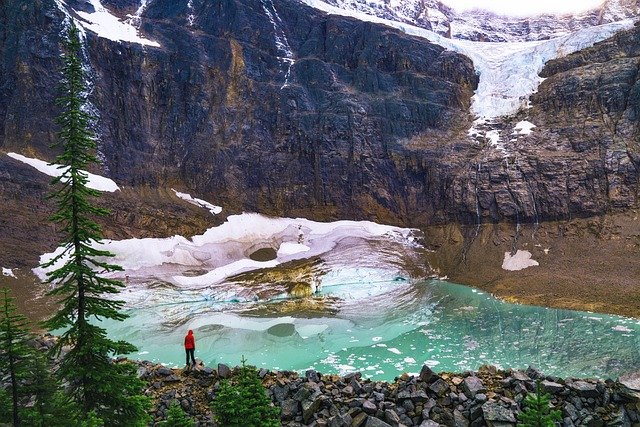
Dr Elisa Mantelli
Questions answered by this expert
So, there are a few pieces to this:
- First an important premise: Only ice that currently sits on land would contribute to increasing sea levels. Sea ice, which forms by freezing of sea water at high latitudes, does not change sea level. So to answer your question we must look at land ice alone.
- What counts as land ice, and how much sea level does it correspond to? Land ice is found in (i) the grounded parts of the two major ice sheets on Earth, Greenland and Antarctica, (ii) a few smaller ice caps (like Svalbard), and (iii) mountain glaciers. If the Greenland Ice Sheet melted, scientists estimate that sea level would rise about 6 meters. If the Antarctic Ice Sheet melted, sea level would rise by about 60 meters. If all the mountain glaciers on Earth melted, sea level would rise by about 40 cm. In total, this adds up to approx 66.4 m.
- How much land would be left if all this land ice melted? Well, all the land that is approx. 65 m above sea level nowadays. You can go check on Google Earth or similar what that means for the place where you live. Can you find out what would be above this level? When you do this, just bear in mind that even if all this ice were to melt (which we do not know it will), certainly it would not happen in our lifetime, and most likely for several centuries. What’s important to realize though is that the impact this could have is huge for all people living on Earth, so we should do all we possibly can to avoid making climate warmer and our land ice melt.
It depends on what the local climate does to the glacier.
In order to understand what it takes for a glacier to disappear, let’s first think about what does it take to keep the size of a glacier constant over time. This depends on climate, in two ways: the snow that accumulates on the glacier in winter with snowfall slowly turns into ice, thus growing the glacier (this is known as accumulation, which stands for `mass gain'); warm summer temperatures melt the ice like an ice cube out of the refrigerator, thus shrinking the glacier (this is known as `ablation’, which stands for `mass loss').
If over one year winter mass gain balances summer mass loss, then the glacier remains of the same size. If winter gain exceeds summer loss, then the glacier grows. If summer loss exceeds winter gain, then the glacier …?
How much exactly the glacier grows or shrinks over one year depends on the difference between winter gain and summer loss. This difference is usually small, and therefore amounts to mass changes from year to year of the order of a small fraction of the glacier total mass.

Ok, so back to your question: how long does it take for one glacier to melt completely? Ultimately, this comes down to how big is the yearly change in glacier mass induced by climate change compared to the size of the specific glacier. So there is no unique answer that applies to all glaciers of the same mountain range: if climate keeps promoting melting, then not all glaciers of the same mountain range would disappear at the same time. Everything else being the same, bigger glaciers would take longer to disappear (but take this just as a rule of thumb: also glaciers with more shaded aspects, or glaciers sitting at higher elevations would survive longer, so it’s not just as simple as size).
Anyways, details aside, and just to give you a sense for what the time scales are: If we think about mountain glaciers (like those in New Zealand or the Himalayas, or the European Alps), the time it takes for a glacier to disappear is anywhere between 10-20 years and 2-3 centuries.










